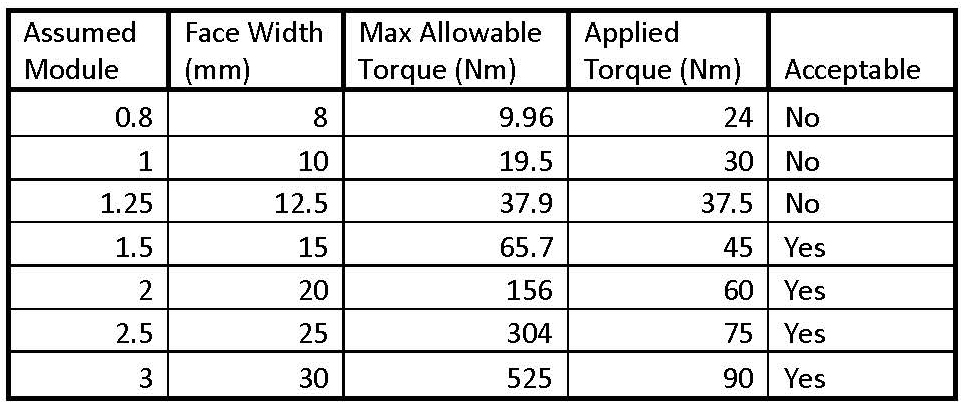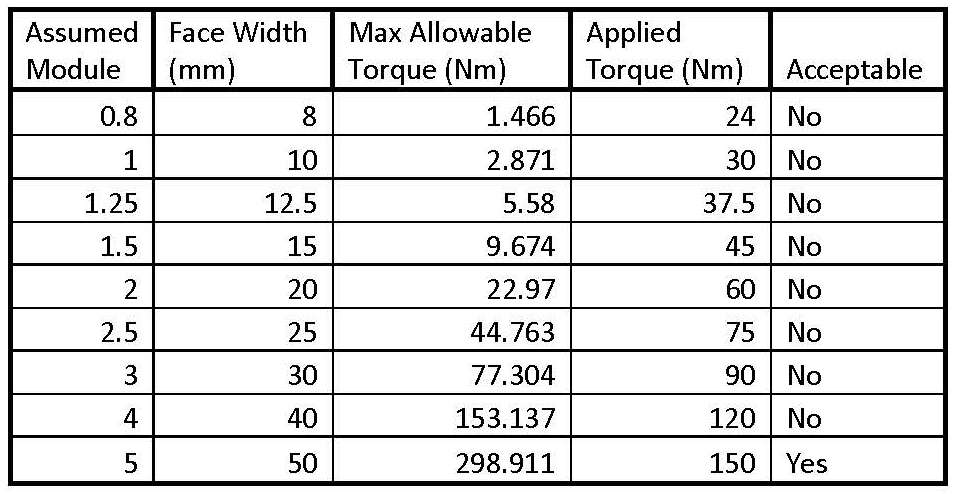While walking through a field of wildflowers one might find a feather nestled amongst the flora. The feather is light, airy and delicate. Beneath the floral landscape, one might find a stone. It is heavy, solid and strong. Based on these quick observations, one might decide that the stone is superior to the feather. This same thought process occurs daily when designers consider metal vs. plastic as a material for gearing.
The fundamental flaw with this analysis is the comparison of observable features while neglecting density. Plastics used in gearing are lighter in weight that steel. They are typically self-lubricating, and due to their ability to absorb vibration, they are quieter. However, a pound of feathers weighs the same as a pound of stones. The same holds true for plastic gearing. Take the following example:
Applied force = 1200 N
Number of Teeth = 50
Material = Carbon Steel
Module = TBD
In order to properly size this gear, we need to determine the Module which will resist the applied torque. If we assume a face width of 10mm per Module, we get the data shown in Table 1.

For this case, we would select Module 1.5.
However, if the material was to be nylon, then the maximum allowable torque for these identical gears would be less. The factor for which the values would be reduced are equal to the proportion of the density of each material. Carbon steel has a density of 7.81 g/cm3, whereas the density of unfilled nylon is 1.15 g/cm3. Thus, the carbon steel gear is 6.79 times denser than the same Module nylon gear.
In order to properly size the same gear, but made from nylon, we would have to calculate which Module would resist the applied torque. Since the Applied force remains the same, the calculations are shown in Table 2.
 In this case the proper selection would be Module 5.
In this case the proper selection would be Module 5.
So why is it that we can design a steel gear in Module 1.5 but we need the nylon gear to be Module 5? Let us consider the tooth geometry, the material and the applied load.
For the example given, the applied load is 1200N. The selection of material will not change this value. The change in Module will change the surface area which the load acts upon. For a Module 1, the tooth face is 2.25mm high and 10mm wide. This gives a surface area of 0.225cm2. For Module 1.5, the tooth face is 3.375mm high and 15mm wide. This gives a surface area of 0.5062cm2. At Module 3, the tooth face is 6.75mm high and 30mm wide. This gives a surface area of 2.025cm2. At Module 5, the tooth face is 11.25mm high and 50mm wide. This gives a surface area of 6.25cm2. This change in surface area is not affected based on material selection. The only change that does occur with a change in material selection is the density.
So, it is not that the nylon gear cannot withstand the loading or have the same life as a carbon steel gear. The only difference is that the size of the tooth has to be increased in order to account for the differential in density.
If given a choice between a pound of feathers and a pound of stones, I prefer a pound of vanilla ice cream.
About the author Brian Dengel is general manager of KHK-USA, which is based in Mineola, New York. Go online to www.khkgears.us.





















